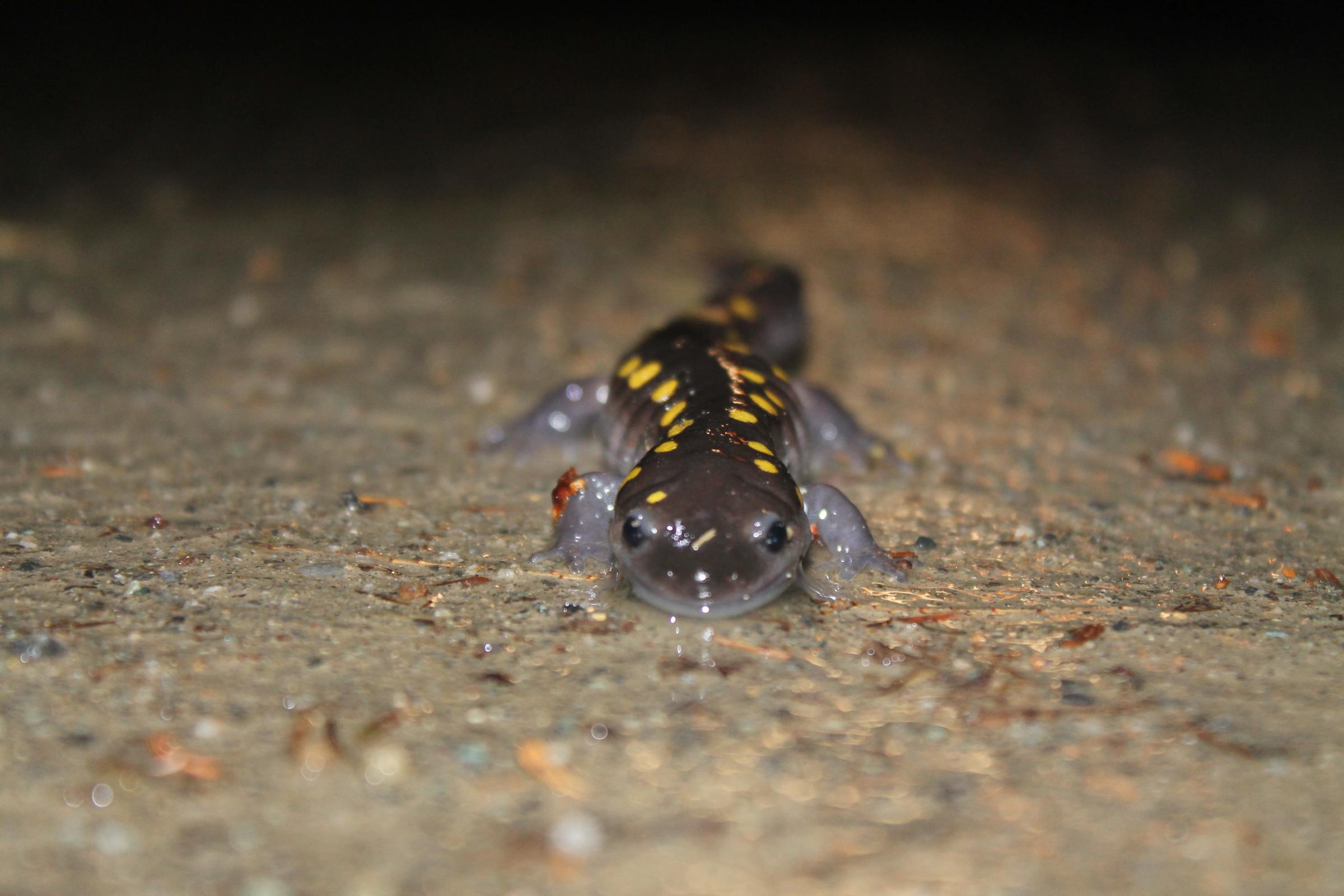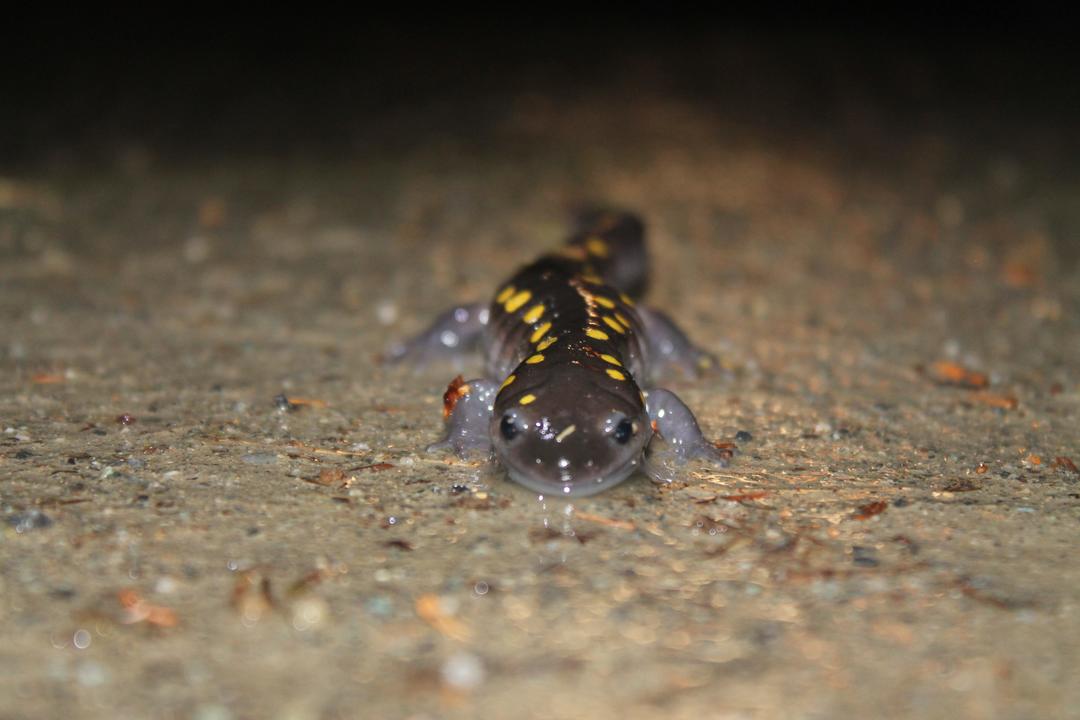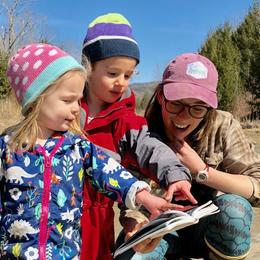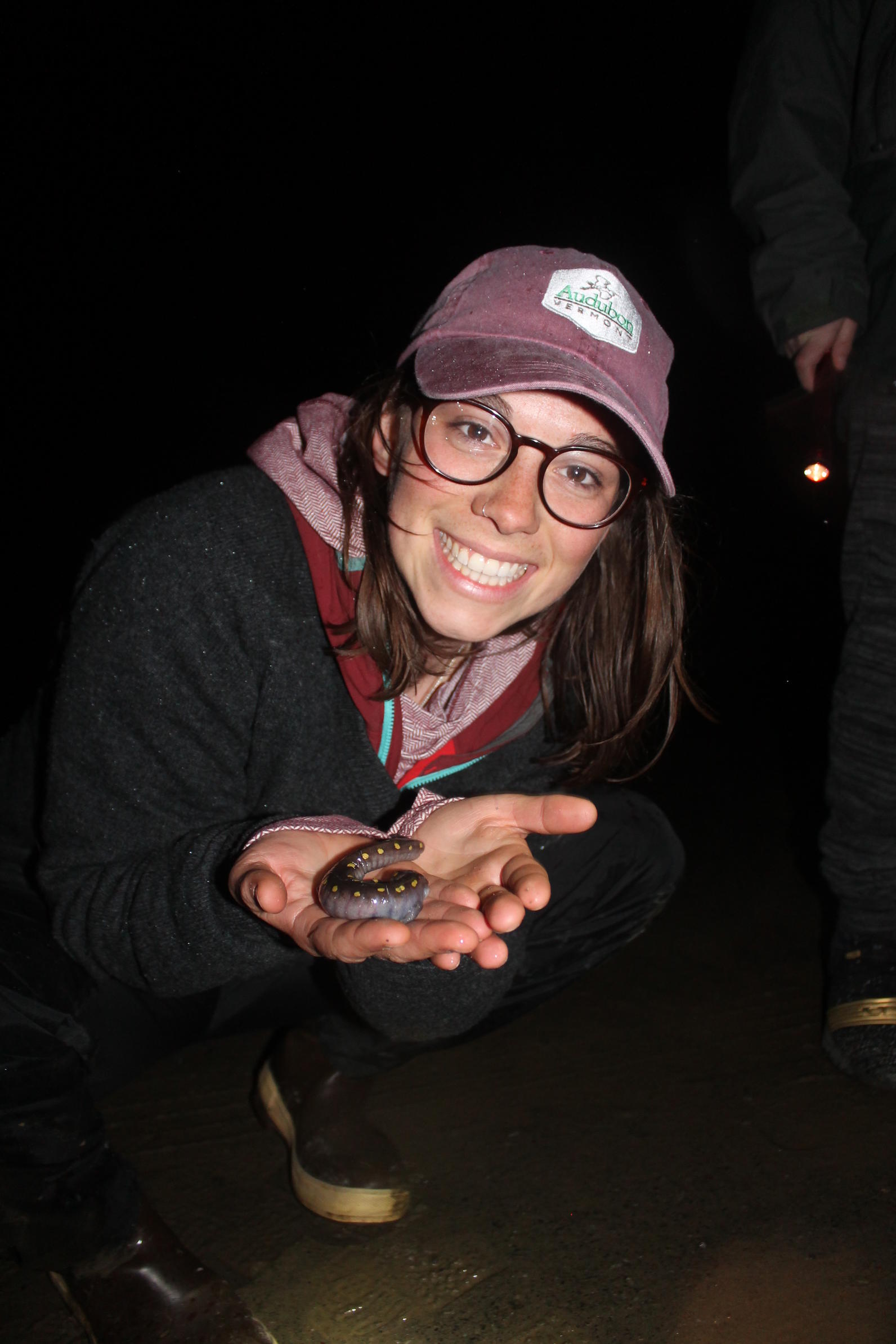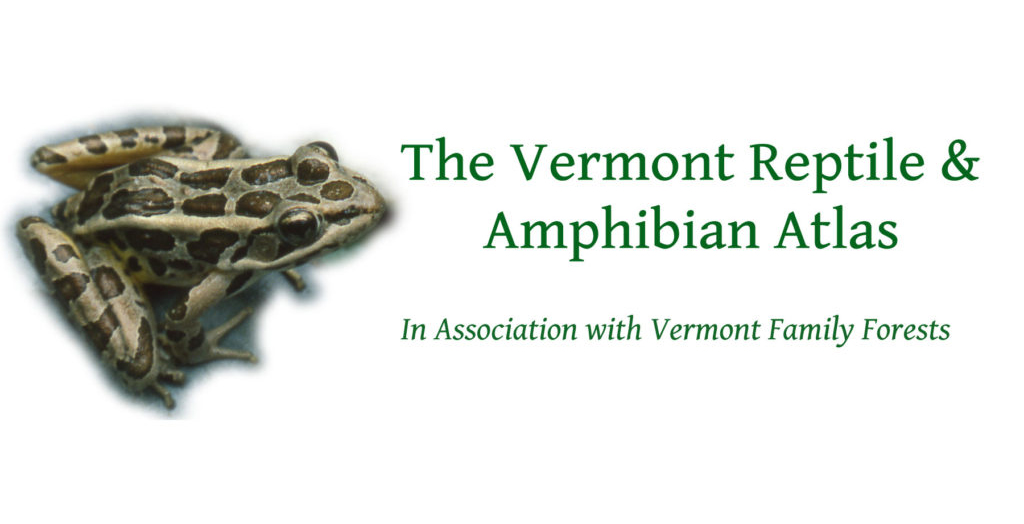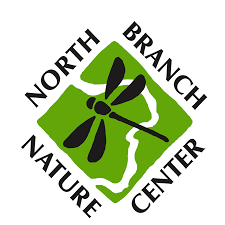As sugaring season winds down, and signs of spring appear, my favorite migration begins. The longer light beckons, icicles drip, snow sluffs, and freezing drops from the sky turn to liquid. That first deep, soaking rain drums the amphibian underworld awake. Like frozen soldiers, they march one chilled foot in front of the other to get to pools. These pools fill each year with the rush of the melting spring snow, creating safe spaces for the next generation of salamanders and frogs. These pools are called vernal pools and they are essential to Vermont’s amphibians, providing fish-free water for them to safely lay eggs and ensure the next generation of amphibians.
Learn all about and how to identify Vermont’s amphibian species, as well as how you can engage in community science throughout Vermont to aid and observe amphibians.
Here is a recording of my webinar about Amphibian Migration and Vermont Amphibian Identification:
Salamander Series Talk Webinar, Rae Bronenkant/Audubon Vermont
JOIN me on my explorations at Audubon Vermont road crossings and amphibian site monitoring:
Night ONE!
Monitoring Amphibian Crossing at Audubon Vermont Night #1! Rae Bronenkant/Audubon Vermont
Night TWO!
Monitoring Amphibian Crossing at Audubon Vermont Night #2! Rae Bronenkant/Audubon Vermont
JOIN some Audubon friends in this puppet show with your kids to learn about salamander migration in Vermont!
Puppet Show: A Spring for Salamanders
Here is a brief overview:
Amphibian migration commences during the “Big Night”, a night where these conditions happen:
- First warm spring rain with temperatures above freezing
- After Dark
- Temperatures are at least or above 40F
- Wet Roads (usually actively raining)
- The vernal pools are at least partly open water at the breeding site
The warmer the temperatures, the greater the numbers of individuals & species. Make sure you dress for the weather & bring a flashlight!
Here is what you will need to go amphibian exploring!
Be Prepared, Be Safe!
- Flashlights
- Reflective safety vest
- Crossing signs (with flashing lights)
- Raincoat and rain pants
- Waterproof boots
- Reflective clothes
- Camera
- Smartphone/ datasheet
- Extra batteries
- Spatula for dead amphibians
- Clean bucket
- Datasheet and clipboard (if you are participating in the NBNC project)
- Protocol Manual (if you are participating in the NBNC project)
A note of safety for amphibians: Please keep in mind these creatures breathe through their skin! Only touch them if you must move them across the road. Humans often have lotions and bug sprays and such on their skin which harms amphibians. Limiting our handling of amphibians can reduce disease spread between individuals as well.
Additional COVID-19 Safety:
- Volunteers should go out solo or with a family/household member. If they monitor with someone outside their household, they should follow CDC guidelines for keeping 6 feet apart at all times.
- Be cautious sharing equipment, best if you have your own!
- No one should carpool with anyone outside their household.
- Everyone should monitor in a place where they can keep their distance from people who might approach and ask questions (i.e. If it is a roadside, then try to get off the road and out of view).
- If you visit a site with other groups present, give them plenty of space, or go elsewhere.
- Avoid sites that are more than 10 miles far from your home.
- Wash your hands before touching amphibians, and only handle animals that aren't moving off the roadway on their own.
Here are some Community Science projects you can be involved in:
Visit the Vermont Reptile and Amphibian Atlas (aka the Vermont Herp Atlas) to report a sighting or get more information while you are out looking for amphibians during migration.
Another great way to engage the natural world and gain information is with iNaturalist. You can take a photo, then upload the photo either from your phone or manually on the computer. If you are unsure of what species you’ve found people in the iNaturalist community will identify it for you. You have the ability to upload sightings to different projects, and these amphibian and reptile sightings get entered into the Vermont Herp Atlas!
The North Branch Nature Center Amphibian Road Crossing Program (ARC) project allows you to track data of amphibian road crossing and reduce the number of deaths in the roads during migration.
The goals of this project are:
-
Increase public engagement in amphibian conservation
-
Decrease direct amphibian mortality at road crossing sites
-
Inform transportation planning with robust data on movement and mortality at road crossings
Head here to get started. This project has a specific protocol to make sure the data is valid. Please take the time to get all of the information necessary to participate in these observations. The website has all the information you need!
Here is the link to the interactive map to see if there are sites near you!
Vermont Vernal Pool Monitoring Project from the Vermont Center for Ecostudies (VCE) is a great project to be involved in if you have a vernal pool near where you live, or frequent an area where there is a vernal pool. This is a great way to watch the whole lifecycle process of some of these amphibians.
A VERNAL POOL is an ephemeral pool or seasonal pool of water that provides habitat for distinctive plants and animals.
According to VCE, a vernal pool has four features:
-
A seasonal wet-dry cycle (fills in the fall and spring, and is dry at least partially in the summer)
-
No permanent inlets or outlets (hydrologically isolated from permanent water. some may have groundwater, but most are fed by surface runoff)
-
No resident fish populations (that is how these creatures thrive)
-
Provide breeding habitat for vernal pool indicator species (mole salamanders, wood frogs, and fairy shrimp)
If you know of a vernal pool near you, reach out to the Vermont Center for Ecostudies! To start collecting data here is the project overview:
-
Volunteer citizen scientists monitor vernal pools annually across Vermont
-
Collect data on physical and biological parameters
Project Goals:
-
Build a base of knowledge regarding the state of vernal pools in Vermont
-
Raise awareness about the value of vernal pools by involving the public in vernal pool monitoring
-
Advance vernal pool conservation planning at the state and local levels
Good luck! Please feel free to reach out to Rae Bronenkant at rae.bronenkant@audubon.org for more information!

